A history of the Watercress Line and the Didcot, Newbury and Southampton Railway (“DN&SR”)
The Watercress Way is a long distance trail established in 2015, which follows or runs close to the track beds of two closed railways – one between Alresford and Kings Worthy which used to be part of the Mid- Hants Railway, and the other between Kings Worthy and Sutton Scotney which used to be part of the Didcot, Newbury and Southampton Railway (“DN&SR”).
1953 OS Map
The Watercress Way in 2020
By 1885 therefore two separate railways were running - one westwards from Alresford and the other southwards from Sutton Scotney. Both met in Kings Worthy at a point on the main London to Southampton railway line near Woodhams Farm 2 miles north of Winchester, which became known as Winchester Junction
Did the two railways connect together?
In fact, there was no direct connection at that time between the two railways here as the DN&SR dived under the junction and followed a different route to that of the mainline ending up at its own station in Winchester known as Winchester Cheesehill (later re-named Chesil). Much later on during the Second World War a mile long spur line was constructed from the up main line which joined the DN&SR south of Worthy Down but this had a short life and was closed in 1951.
Today both railways are closed, and parts of their routes are no longer accessible as the land has been sold off, or built upon and the cuttings filled in. In some places nature has taken over!
Winchester Junction looking North
Why were the lines built?
The Mid-Hants line
By the middle of the 19th century, the Industrial Revolution had completely changed the economic face of the country. The economy was no longer based principally on agriculture but on the production and distribution of manufactured goods. The population in the countryside had declined while towns and cities had expanded. The catalyst for this revolution was a plentiful supply of coal which enabled steam to become a reliable source of motive power for the mass manufacture of products. Steam had also become the principal power source for new forms of
transport including railways and steamships. Ports, such as Southampton, played a pivotal role in the growth of international trade. All these developments had resulted in Great Britain becoming the dominant industrial power in the world, a fact which was celebrated by the Great Exhibition in 1851.
The birth of the L&SWR
The attraction of linking Southampton with London by railway at a time when roads were poor and coastal shipping slow and unreliable was the driving force behind the creation of the London & South Western Railway (“L&SWR”). It built the mainline between the two cities via Basingstoke and Winchester between 1838 and 1840.
Railway Mania?
The line was built at a time of frenzied activity when investors were pouring money into railway ventures, a period often referred to as the age of “Railway Mania”. The Railway Mania bubble burst in 1846 as a result of a financial crisis brought about by a disastrously cold and wet summer the previous year when the harvest failed and the potato crop in Ireland was wiped out. Money was hard to come by and many shareholders of railway companies failed to meet payment calls on their shares to meet construction costs. Speculative investment in new railways stopped almost overnight but this made it easier for the larger well managed companies, like the L&SWR, to promote their own schemes to establish feeder branches on realistic financial terms. The company had opened a branch from Woking to Guildford in 1845 and was attracted by the area between Alton and Farnham which was a leading centre of the brewing industry. Farnham hops were highly prized and hop growing and the malting of barley were major businesses in their own right. With Army garrisons at nearby Aldershot as well, the company included that the area had good potential as a source of railway traffic. They therefore promoted the construction of a line from Guildford to Farnham which opened in 1849 and which was extended to Alton in 1852. Later on, they also promoted the construction of a line between Pirbright on the mainline and Farnham via Aldershot. This opened in 1870 and enabled trains from Alton and Farnham to have direct access to London, avoiding Guildford.
Map of principal railways by 1885
The Jane Austen Connection
After the railway had reached Alton a number of local landowners wanted the line to be extended to Winchester to allow connections to be made to Southampton and beyond, but the L&SWR refused probably because of the cost involved in constructing the embankments and cuttings which would be needed. Consequently, in 1860 a group of local landowners, business and professional men, including Lord Ashburton and Sir James Tichborne, got together to promote a 17 mile link from the L&SWR terminus at Alton to the London to Southampton mainline at Kings Worthy via Alresford. The group was chaired by Edward Knight, proprietor of the Chawton estate and nephew of the novelist, Jane Austen.
Edward Knight, photo by Brodnax Moore
Over to the AA&WR
The promoters prepared their own Bill for the 1861 session of Parliament. A company called the Alton, Alresford & Winchester Railway Company Limited (“AA&WR”) was incorporated and, following a board meeting held in the Swan Hotel at Alresford on 27th February 1861, a prospectus was published which estimated the cost of construction at £150,000. The promoters intended to enter into an agreement for working the line with the L&SWR but the L&SWR was unwilling at first to cooperate. However, the L&SWR soon realised that its intransigence might persuade the promoters to join forces with the Petersfield Railway which was then seeking powers to build a linefrom Petersfield to Southampton via Bishops Waltham which, if realised [it never was], would have destroyed the L&SWR’s lucrative monopoly of railway traffic into Southampton. The L&SWR therefore changed its mind and eventually agreed a 10 year working agreement from 1865 under which it agreed to provide the rolling stock and staff for the new line.
The necessary Act of Parliament was passed on 28th June 1861 but the AA&WR experienced some difficulty in getting the necessary financing in place as a result of which construction work was delayed. The line was eventually completed and opened on 2nd October 1865 as a single line of railway, but a condition of the working agreement with the L&SWR required the bridges and earthworks to be capable of taking double tracks. This increased the construction cost to over £200,000. The line was however never double tracked and remained as a single track with passing loops at the stations.
Mid-Hants Railway is born
By the time the line had opened in 1865 the company had changed its name from the cumbersome “Alton, Alresford & Winchester Railway” to the “Mid-Hants Railway” by which name the surviving section between Alton and Alresford is still known today. Although most today will recognise the Heritage railway name of The Watercress Line.
The DN&SR line
The origins of The Didcot, Newbury & Southampton Railway (“the DN&SR”) Figure 7 map go back to 1846, before the idea of the Mid-Hants line had been conceived, when a number of speculative proposals for direct links between Southampton and the coalfields of the Midlands and the North were being presented to Parliament; all however failed for one reason or another. Some 25 years later, Southampton found itself at a disadvantage to rival ports as supplies of good quality steam coal for the shipping lines had to be sent via very circuitous routes. Moreover, the business community in Southampton was becoming rapidly disillusioned by the L&SWR’s high charges and what they saw as poor service. To add to this there was also a concern that Southampton was becoming uncompetitive with the opening of shorter cross-Channel routes from Dover.
Consequently, in 1873 a group of speculative promoters got together and formed what was to become the DN&SR. They succeeded in getting Parliament to authorise the construction of a line to connect at Didcot with the Great Western Railway (“GWR”) lines to Bristol and the Midlands and near Micheldever with the L&SWR mainline to Southampton, the intention being that the line would be worked by the GWR.
The Act was however poorly drafted in a number of respects and, in particular, it failed to give the GWR the necessary running powers over the L&SWR mainline between Micheldever and Southampton. As a result financial support was not forthcoming, and the scheme was on the point of being abandoned in 1879 when a group of landowners in the Newbury area headed by the Earl of Carnarvon stepped in, took over the DN&SR and saved the project. They obtained a new Act of Parliament in 1880 but this still envisaged a connection into the L&SWR mainline near Micheldever to which the L&SWR strongly objected as it would give the GWR access to what the L&SWR regarded as their territory.
Acrimonious discussions took place between the DN&SR, the GWR and the L&SWR and in 1881 official deputations from Southampton led by the city’s mayor agreed plans with the board of the DN&SR for an extension into Southampton itself. A further Act of Parliament was passed on 10th August 1882 which authorised a deviation from the original route south of Burghclere via Whitchurch, Sutton Scotney, Kings Worthy, Bar End Winchester, Twyford, Shirley and into Southampton itself. The original proposed route from Burghclere to Micheldever was abandoned.
Although the Didcot to Newbury section of the line came into use in 1882, construction work on the new route south of Newbury did not start until March 1883. However, only 6 months later work in the Southampton area was stopped for lack of capital, never to be resumed. The Newbury to Winchester Bar End section was opened as a single track line with passing loops on 1st May 1885 although the trackbed and bridges were designed eventually to accommodate double tracks. The line was operated by the GWR although this was a significant incursion into the L&SWR’s territory. The L&SWR remained bitterly opposed to the DN&SR pursuing its own independent route from Winchester to Southampton but eventually a compromise was reached under which the L&SWR agreed to build an extension from Winchester Bar End to join the mainline at Shawford. This line was opened in 1891 which allowed DN&SR trains to proceed beyond Winchester to Southampton with a change of locomotive. From 1910 GWR engines were allowed to work through on certain trains but it was to be another 43 years before engine changing at Winchester ceased altogether!
The stations and structures along the Watercress Way
Alresford
The station was built by the L&SWR on the then southern edge of the town and opened for business in 1865. It was equipped with an extensive goods yard including a goods shed and various sidings. The station building was a double-fronted two-storeyed main building with a lean-to on the eastern side.
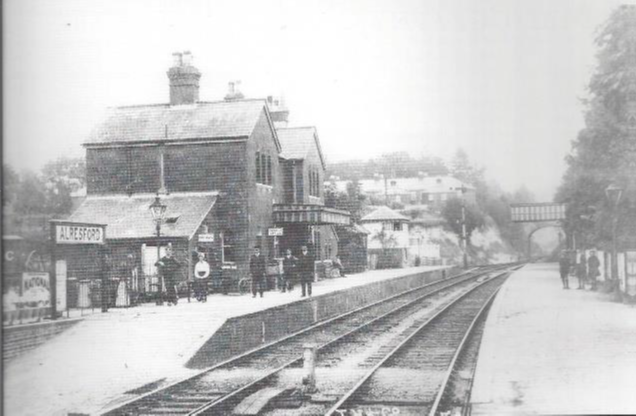
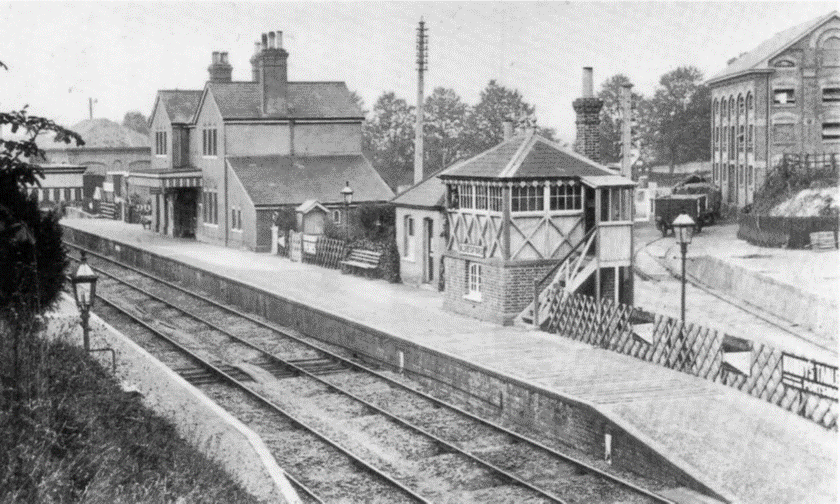

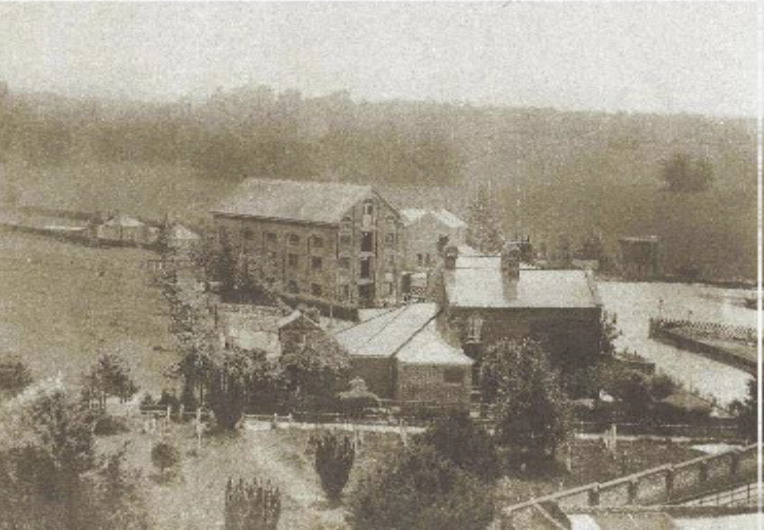
Watercress? Why not Turnip Line?
One consequence of the opening of the Mid-Hants Railway was the commercial development of the watercress industry. Watercress grew wild in the River Itchen and its tributaries but it was not farmed commercially. The arrival of the railway presented the opportunity to get perishable products like watercress to the major markets in London and the Midlands quickly. In the late 1860s Thomas Mills came from Sussex to open up beds around Alresford and others followed him. The cress was grown in specially built shallow gravel beds fed by clear water from chalk springs and boreholes. After circulating through the crop, the water was discharged into nearby rivers or streams.
The cress was harvested by hand, washed, trimmed and packed into large hampers called “flats” (56lbs 25.4kg) and “half flats” (28lbs 12.7kg). There was a special siding at Alresford station for loading the watercress into railway wagons which would whisk it up to London and other major markets for sale on the following day.
Watercress beds were also established after the First World War close to the River Dever, a tributary of the River Test, in the villages around Sutton Scotney. After harvesting and packing it was taken by horse and cart or lorry to Sutton Scotney station for shipment to the major markets. The railway goods rate book for 1896 shows that it cost 2/- (10p) to send half a hundredweight, (56lbs), of watercress from Alresford to Waterloo and 3/6d (17½p) to Birmingham.
Watercress is a popular salad product today and its health benefits are widely recognised. Nowadays however the cultivation of watercress is a mechanised process and the finished product is transported by road by sophisticated refrigerated trucks to wholesalers and supermarkets all over the country.
Apart from watercress a steady volume of goods traffic was handled at Alresford station. A large grain store was built in 1873 on the station site by Messrs Collis and Porter who were corn, coal, cake and artificial manure merchants and corn factors. They installed their own railway siding. The building has been put to a number of different uses over the years, including as a toy factory, and is used today as offices. It has been listed as a Grade II listed building since 1976. With a steady decline in goods traffic, the sidings were taken out of use in 1964 and, after a strongly contested closure process the station closed to passengers along with the line itself in 1973.
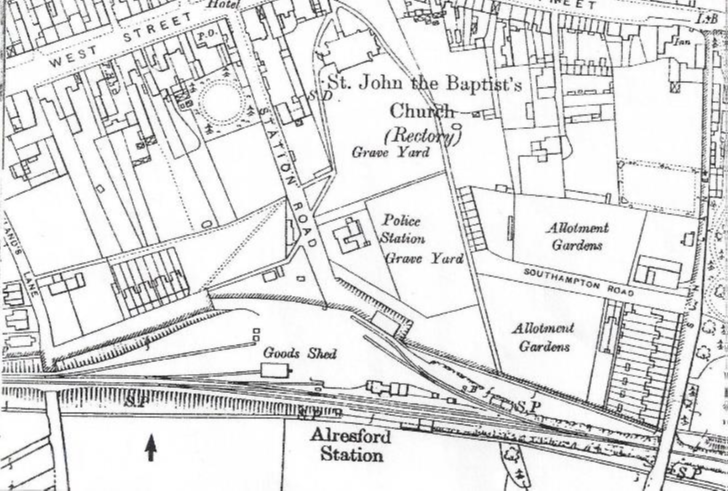

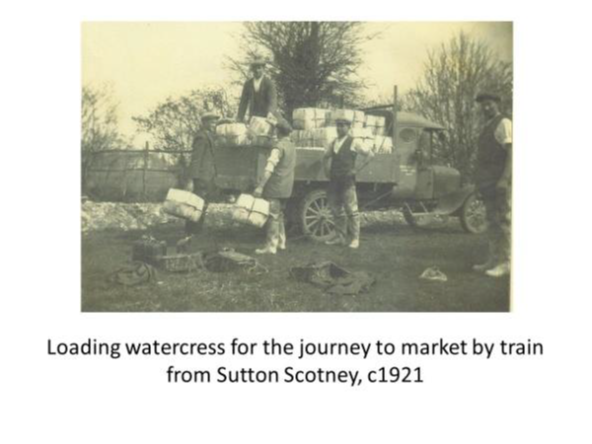
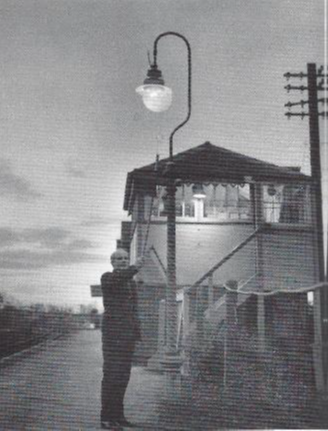
From Alresford to Itchen Abbas
After leaving Alresford, the line crossed the road to Winchester by Sewards bridge and the River Alre (a tributary of the River Itchen) then past some watercress beds and the village of Itchen Stoke, over an impressive 3 arched bridge at Northington Rd until it reached Itchen Abbas, the only intermediate station between Alresford and Winchester.
Although the population of Itchen Abbas was sparse, the station originally had a passing loop with two platforms, a signalbox and a goods yard on the south side of the line which the local farming community used for the carriage of their crops and cattle. Business was brisk there and an additional siding was constructed in 1907. The L&SWR built 3 cottages for railway workers on the north side of the line in 1892.
Both goods and passenger traffic started to decline in the 1920s with the growth of the road haulage industry and competition from buses. As a result, economies were made in 1931 when the up platform was taken out of use and the passing loop and signalbox were removed.
Goods traffic continued to decline and goods facilities were withdrawn altogether in 1962 and the sidings removed in May 1963. The station became unstaffed in 1965 and closed in February 1973. New houses were built in the 1980s on the station site. They have interesting names- Beeching, Halt…
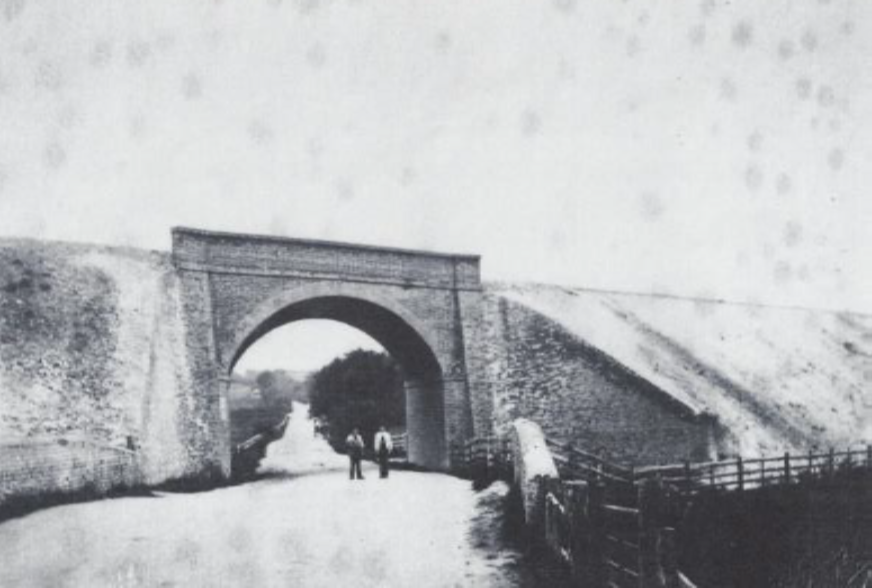
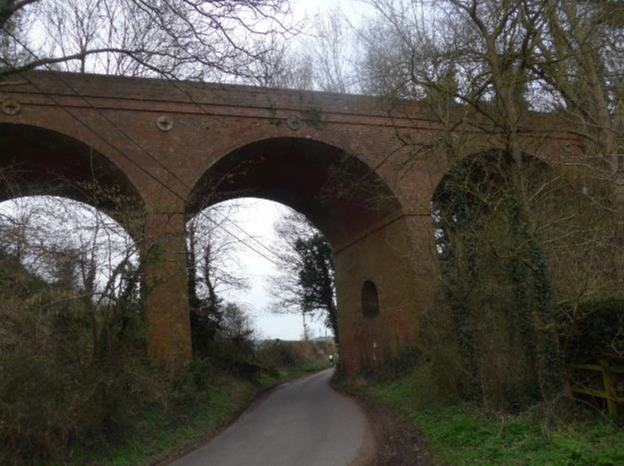
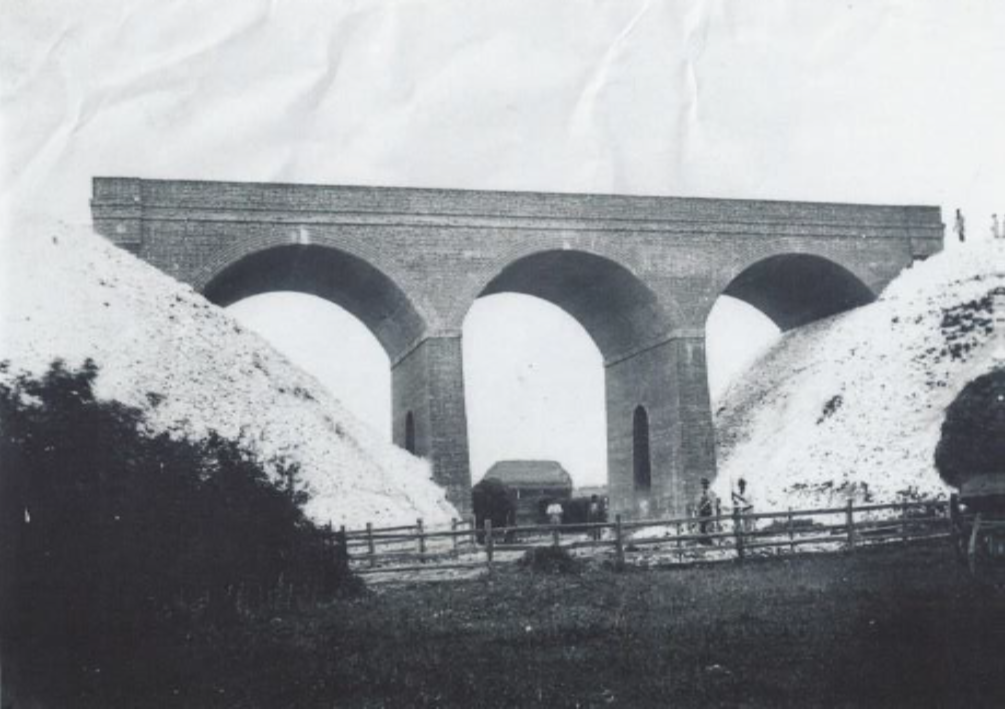
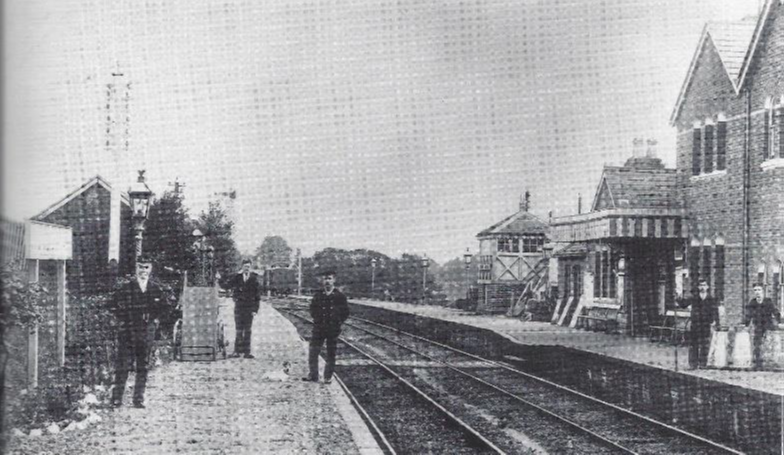
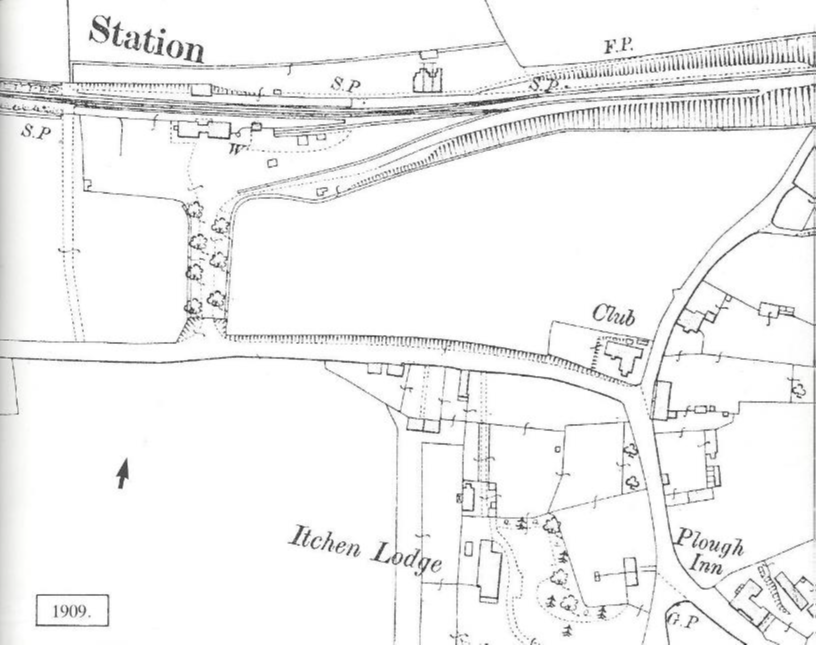
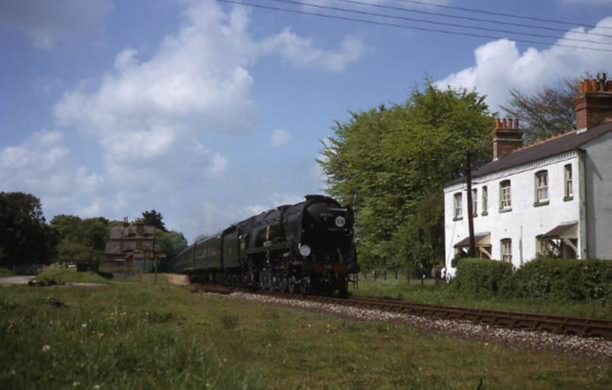

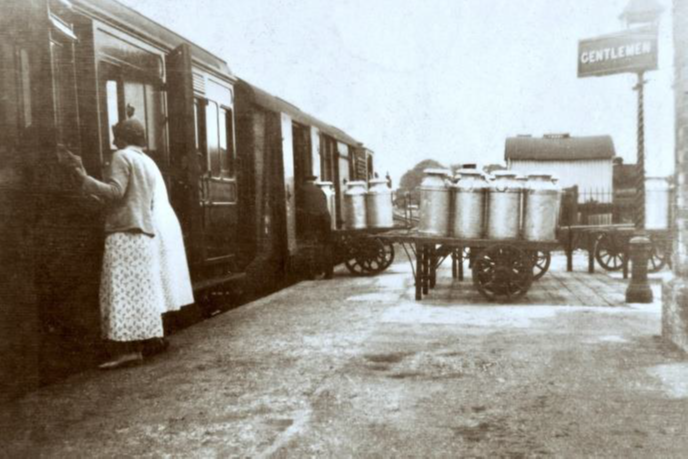
From Itchen Abbas to Winchester Junction
From Itchen Abbas station the line passed through woodland and a series of deep cuttings which are now filled in. The M3 motorway which opened in 1985 now slices through the route just to the north of Grace’s Farm, Martyr Worthy. The old route then passed under a hump bridge on what is now the A33 trunk road and the 3-arched Lovedon Road bridge on the road to Stoke Charity.
No station was ever built in the Kings Worthy area by the L&SWR although proposals for a halt at Springvale were made before the First World War and in the early 1970s but these came to nothing. After passing under the Lovedon Road bridge the line crossed Springvale Road before joining the L&SWR mainline at Winchester Junction near Woodhams Farm.
A signalbox and some railway workers’ cottages were situated at Winchester Junction in the “V” formed by the mainline and the Mid-Hants line. The signalbox disappeared in 1979 and the cottages were demolished eleven years earlier in 1968.
Although both railways and the L&SWR mainline passed through or close to the Worthys, the only station to be built in the vicinity was near the site today of the Kings Worthy Foundry, a mile south of Winchester Junction on the DN&SR line. Apart from passenger traffic this station handled heavy machinery from the foundry, farm produce and racehorses from nearby studs. It was also the home base for a door-to-door railway lorry service around the Winchester area.
The station was closed to passengers in 1960 and to goods traffic two years later. It is now partly under the A34 and Worthies sand and ballast firm.
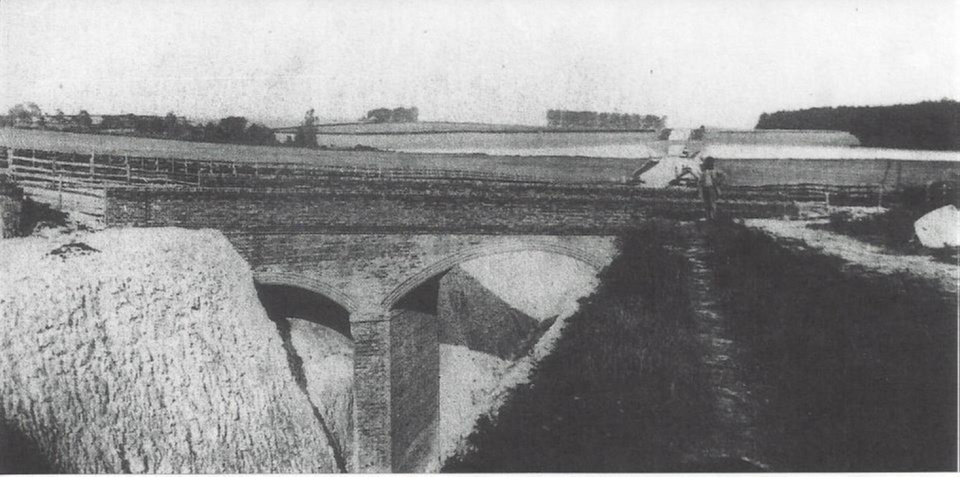
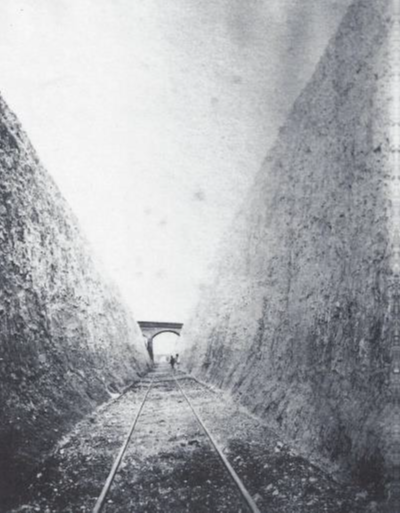
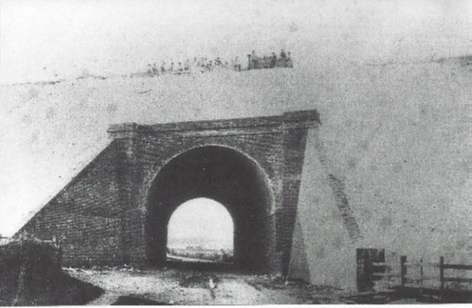
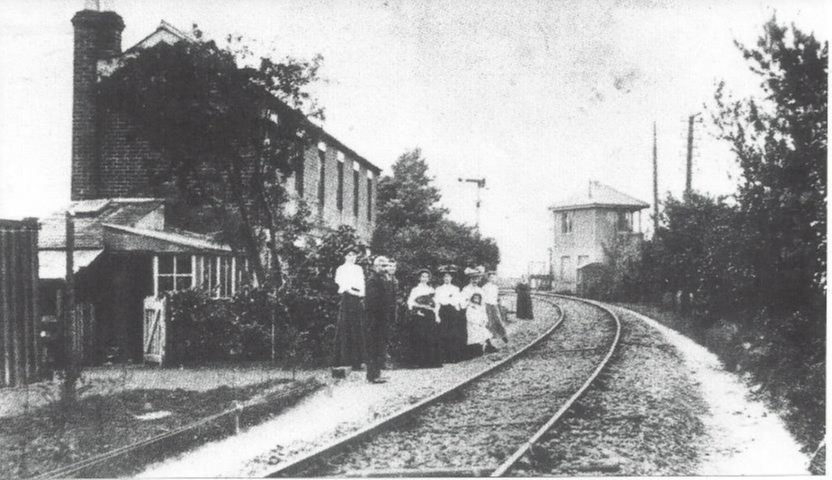
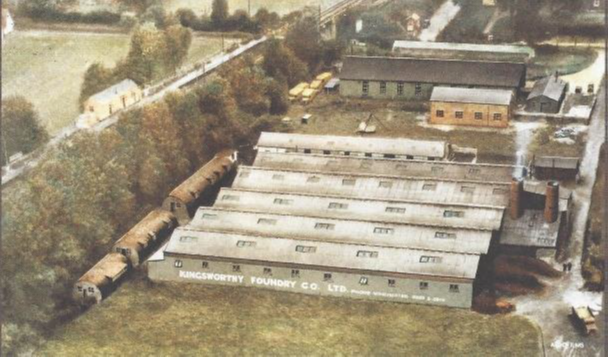
From Winchester Junction to Worthy Down
From Winchester Junction the DN&SR line passed north through a cutting to a bridge where the wartime spur from the mainline started to run parallel to the DN&SR running line. The bridge was doubled in length in 1943 to accommodate the spur line and so the approach to Worthy Down station was in effect double track for a short time from 1943. Both lines joined just before Racecourse Bridge – the name being a reminder that Worthy Down used to be the site of Winchester racecourse. The station, was located just to the north of the bridge. Worthy Down station opened in October 1917 to serve the Royal Flying Corps base at Worthy Down. It was a very spartan and bleak location. In the following year two sidings and a passing loop were added and a platform for use by the public was opened on the east side of the line. The booking office was originally a “grounded” horsebox but this was replaced in the 1920s by a corrugated iron hut. The old red building on the platforms today was part of a military armaments store.
The base has been home to a variety of military units over the years and became a naval air station in 1939 when it was known as HMS Kestrel. A propaganda broadcast from Germany (Lord HawHaw) proudly proclaimed one night that “we have sunk HMS Kestrel”! In 1942 the platform was closed, the track layout was remodelled to allow longer trains to pass each other and a new island platform opened in 1943. During the war, Special Forces trains were put on at night from Winchester to bring service personnel back to the camp. In 1953 the sidings were removed and the station closed in 1960.
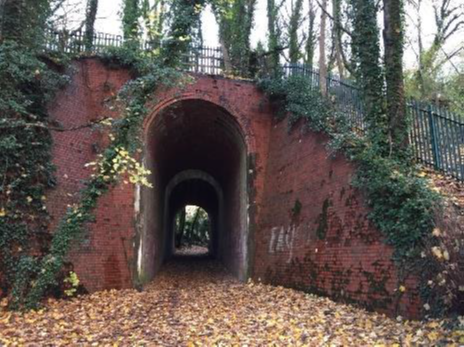
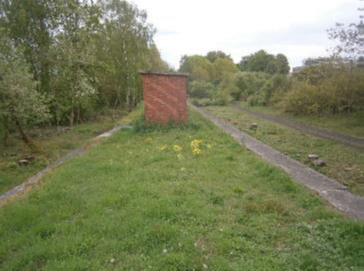
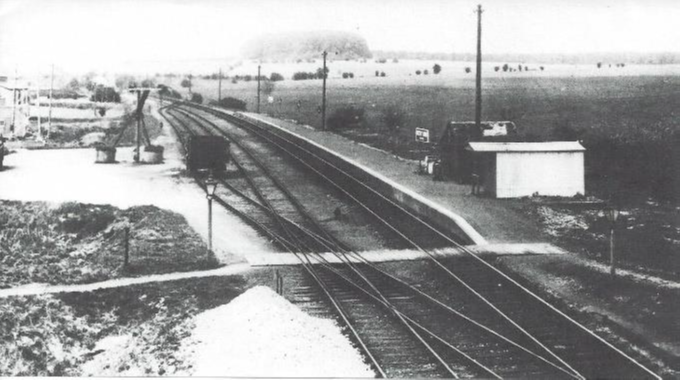

From Worthy Down to Sutton Scotney
After Worthy Down, the line entered Christmas Hill cutting, crossed Wonston Manor Farm and went under Wonston Road bridge into Sutton Scotney. When the DN&SR line was built Sutton Scotney was intended to be the last station before Winchester. There were no plans then for stations at Worthy Down and Kings Worthy. The station was built with a passing loop and signalbox, two platforms and a goods yard. The main station building on the up side was a two storeyed brick building with a large platform canopy. This housed the booking office, waiting room and goods office. The signalbox and a small wooden passenger shelter were on the down side. A footbridge linked the two platforms. The goods yard had a large goods shed, a cattle pen and a 3 ton yard crane.
Sutton Scotney station closed to passenger traffic on 7th March 1960 and to goods traffic 4 years later, on 3rd February 1964. The station buildings were then demolished and in 2019 housing built on the site (Called Old Station Park). Sadly, the last remaining remnant of the station - the old goods shed – was recently demolished. This building used to have a climbing rose on it pruned to read “GWR” which must have annoyed the L&SWR and its successor, the Southern Railway!
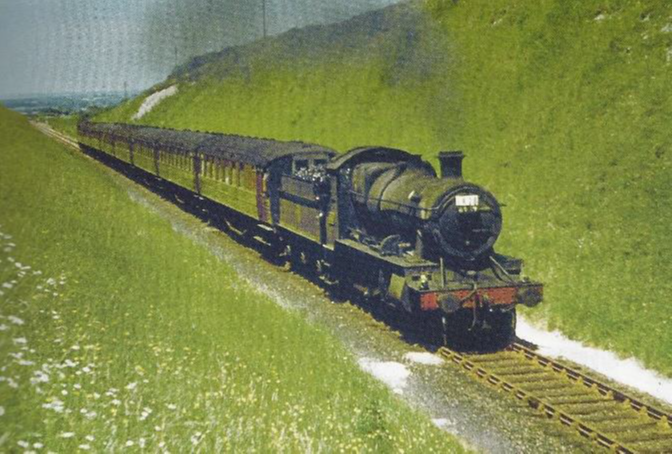
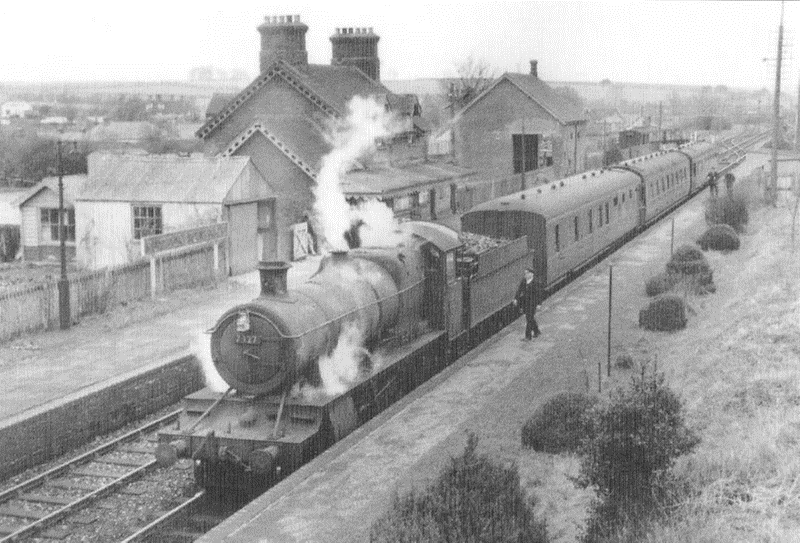
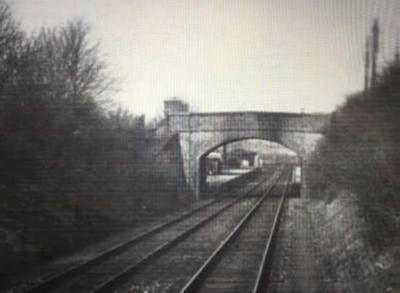
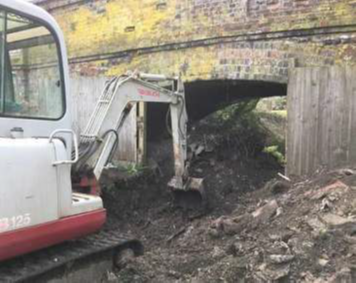
The train services operated over the Watercress Way
Both the Mid-Hants line and the DN&SR line were operated as single line operations which meant that the number of train services which could be operated over the lines was severely restricted. The principal feature of single line operation was that the two routes were divided into separate sections for signalling purposes, generally between stations. Each section had a machine, linked electrically, in the signalbox at each end of the section from which only one token could be extracted at a time. The driver of every train had to have a single line token before entering a section and on leaving it he had to surrender it to the signalman who inserted the token into his token machine. This cleared the section for the next train or a train travelling in the opposite direction. This procedure ensured that only one train at a time could occupy a section thereby eliminating the possibility of a collision.
Up to the 1923 Grouping
The Mid-Hants line
The train service on the Mid-Hants line opened in 1865 with one goods and 4 passenger trains on weekdays only which, in reality, were the existing services between Guildford and Alton extended to and from Southampton. Although Alresford was a self-sufficient market town before the railway arrived, it did provide more opportunities for locals to travel to Winchester for a greater range of shopping and entertainment and for farmers, merchants and dealers from a wider area to travel to Alresford for the regular markets and sheep fairs.
The Mid-Hants Railway Company was never a financial success. Its directors considered that the poor financial performance was due in part to the way in which the L&SWR operated the line under the working agreement. They accused the L&SWR of deliberately turning traffic away from the line and towards its mainline via Basingstoke. Even when the L&SWR opened a direct connection between Alton and the mainline at Pirbright Junction in 1870 which allowed through trains between London and Southampton to be routed via the Mid-Hants Railway timings did not improve. Negotiations between the two companies eventually led to an arrangement under which the L&SWR agreed to lease the line from the Mid-Hants Railway Company from 1st January 1880 but this was short lived as the L&SWR bought the line outright on 30th June 1884 for little more than the original construction cost and the Mid-Hants Railway Company then ceased altogether to be an independent railway company. After it had secured complete control the L&SWR increased the service to a 6 passenger train weekday service and introduced a Sunday service for the first time.
The DN&S line
The train service on the Newbury to Winchester section of the DN&SR on opening consisted of four stopping trains each way on weekdays only. A fast train in the down direction was tried briefly in 1895 and through carriages between Leicester and Southampton were introduced in 1901 followed by a restaurant car train to Newcastle in 1903. From 1897 the GWR operated direct services between London Paddington and Southampton via Newbury to the annoyance of the L&SWR but all these through services ceased with the advent of the First World War.
Wartime
During the Boer War and the First World War both the Mid-Hants and the DN&SR lines carried massive military traffic – troops and equipment - bound for Southampton which in 1914 was the primary military embarkation port for the British and Allied Expeditionary Forces bound for Europe. At the beginning of the First World War, the country’s railways were brought under Government control and run by an executive committee which coordinated the requirements of military and ordinary trains.
After the First World War, there was general agreement that the benefits of unified operation should continue in peacetime and so at the beginning of 1923 practically all the country’s railways were amalgamated into 4 large groups, the L&SWR becoming a component of the Southern Railway and the DN&SR being absorbed into the GWR.
Snowbound! 1927 between Itchen Stoke and Abbas
Typical GWR train from Southampton to Newbury c1899
From the 1923 Grouping to Nationalisation in 1948
Services on both the Mid-Hants and the DN&SR reverted more or less to the patterns that had prevailed before war broke out in 1914. However, the financial position of the railways between the two World Wars seriously deteriorated as a result of growing competition from roads. In the case of the Mid-Hants line this led to the Southern Railway making major cuts to the line’s operating costs which included, for example, the removal of the passing loop and signalbox at Itchen Abbas in September 1931.
The Mid-Hants Line
In 1937 the Southern Railway electrified the line from Farnham to Alton and train services on the Mid-Hants line had to be modified. Up to that time the route had been served by some through trains from London to Eastleigh or Southampton. When the new electric services were introduced the through workings were replaced by so-called “push-pull trains” operating between Eastleigh and Alton.
These trains consisted of a couple of carriages permanently coupled to a steam locomotive which either pushed or pulled its carriages along the track. The trains could be driven either from the cab on the locomotive when the train was travelling with the locomotive at the front or from a special compartment at the back of the train when the carriages were being pushed. The great advantage of a push-pull train was that it eliminated the need for the locomotive to run round the train at its destination ready for the return journey, rather in the same way that modern electric and diesel multiple units are operated today.
The change to push-pull trains annoyed many local travellers as it effectively sealed the fate of the Mid-Hants line as a country branch line rather than a secondary through route offering alternative routes between important centres such as Southampton, Guildford and London. The number of weekday services was however increased from 6 to 7 and there was a weekday through service between Margate and Bournemouth but this did not stop between Alton and Winchester and only lasted until the Second World War broke out in 1939. During the Second World War, in addition to the normal passenger service the line again handled troop trains from the Aldershot area to Southampton which was the main supply bridgehead for the D-Day landings.
The DN&SR line
Despite the merger of the DN&SR with the GWR in 1923, the GWR showed little interest in the line. It preferred to send its heavy north-south freight traffic by less steeply graded routes, such as that through Basingstoke and Reading. As far as passenger services were concerned, these were similar to those which prevailed before the First World War with the addition of a late evening train from Winchester mainly to serve the many military camps in the area. There was also a service of through carriages to Edinburgh which ran between 1922 and 1939 in the up direction only. During the Second World War the alternative routes between the South Coast and the Midlands and the North became congested on many occasions. The decision was then taken to double the northern section of the line from Woodhay (south of Newbury) to Didcot and to install or extend the length of the existing passing loops and improve the signalling south of Woodhay. These works allowed much longer trains of up to 70 wagons to pass each other. In addition, a brand new mile long spur from the up mainline at Winchester Junction was constructed to relieve congestion on the mainline.
When all these works had been completed the DN&S line became an essential link between the armament and military equipment suppliers in the Midlands and Southampton Docks in readiness for the invasion of Europe on D-Day. Prior to D-Day, 16,000 military trains operated over the line conveying weapons, stores and men to Southampton from various supply depots including Newbury where the US army set up a vast transportation establishment on the racecourse. After the invasion, the line handled trains conveying prisoners of war as well as returning troops.
After the war, the line reverted to being a rather sleepy rural backwater on the national rail network. The wartime link with the L&SWR at Winchester Junction closed to traffic in 1951 but continued to be used until 1964 as a long storage siding for condemned rolling stock waiting for the scrapyard.
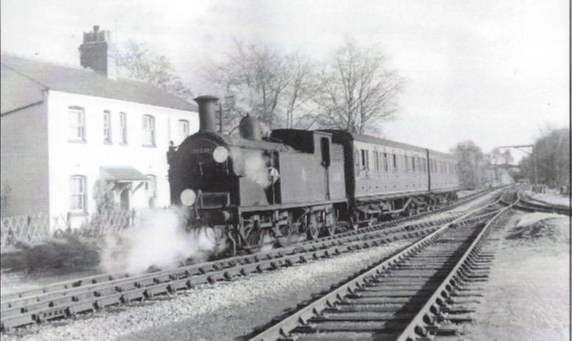

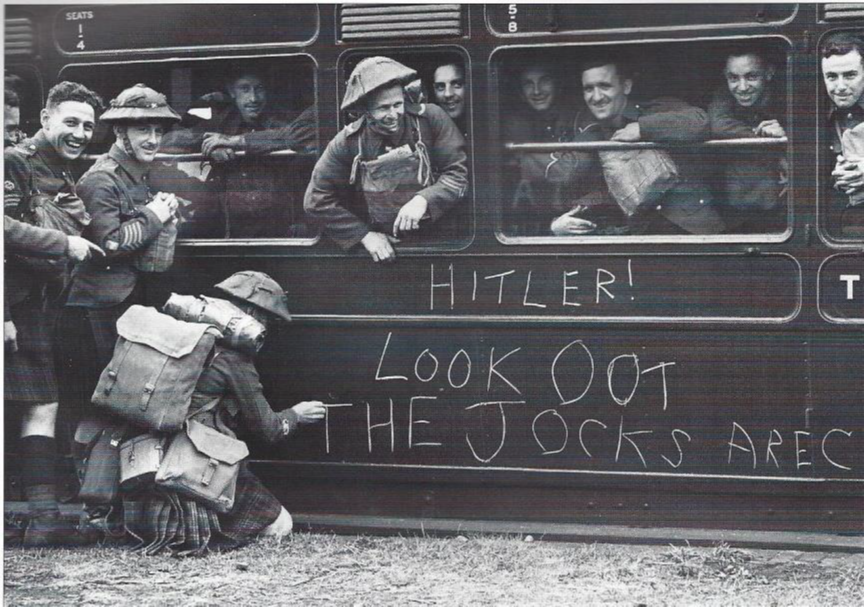
Post Nationalisation
A major reorganisation of the railway network took place when Labour came to power after the war. On 1st January 1948, the railway network was taken into public ownership. British Railways was born and the Mid-Hants line became part of the Southern Region of British Railways and the DN&S became part of the Western Region.
The Mid-Hants line
In 1949 the Southern Region decided to add two further services to the Mid-Hants timetable, making 9 trains each way, one of which was a service starting in Southampton. The total time including stops from Winchester to Alton for the 19 mile journey from Winchester to Alton was about 41 to 48 minutes.
Steam power was replaced by diesel powered multiple units in 1957 which offered an hourly service between Alton and Southampton. These services were a success, partly helped by the imposition of petrol rationing following the Suez crisis which itself had generated some more military traffic. Although receipts improved, the profitability of the line remained in question. The watercress traffic had been lost to road haulage and the cost of running the pickup goods train (which was reduced from a daily service to three times a week in 1959) did not help the line’s finances. In 1962 goods facilities were withdrawn from Itchen Abbas and two years later at Alresford. In 1963 Dr Beeching published his infamous Report on the Reshaping of the Railways.
This earmarked the line for closure although many hoped that the line would be saved as the line had a strategic value as a diversionary route when there was engineering work or an operating problem on the mainline between Woking and Winchester. In fact, there was a substantial amount of diversionary traffic while preparations were being made for the electrification of the mainline between 1965 and 1967. This was not to be and in 1967 Itchen Abbas was demoted to the status of an unstaffed halt and closure notices were issued for the whole of the line’s services and stations in 1967 which sparked off a huge campaign against closure. Sadly, the resistance to closure was not enough to save the line and it eventually succumbed to closure on 5th February 1973 although the signalbox at Winchester Junction survived to 1979. Since then, the line from Alresford to the site of Winchester Junction has been abandoned, cuttings filled in, and parts of the trackbed absorbed into adjacent farms. Itchen Abbas station was demolished and redeveloped as a small housing estate, but the stretch between Alresford and Alton has been preserved as a heritage railway.
The DN&SR line
On nationalisation in 1948, the DN&SR line became part of the Western Region of British Railways but this did not stop a steady decline in passenger revenue. Four passenger trains ran along the line each way until 1960. The typical train of an ex-GWR locomotive and two or three elderly carriages ambling through the countryside was usually virtually empty except on market days in Winchester and Newbury. The line did however see some special excursion traffic during the summer months. Closure became inevitable and British Railways withdrew the passenger service in 1960 well before the Beeching axe fell. Freight traffic was however still reasonably healthy with through traffic between the Southampton area including oil trains from Fawley) to the Midlands and the North. This traffic was however eventually diverted to the easier gradients of the Basingstoke and Reading route and the DN&S line was finally closed in 1964.
Before closure became a reality the line had a famous regular visitor - the GWR locomotive “City of Truro”, which was claimed to be the first steam locomotive in the world to break through the magic 100mph barrier in 1904. The engine had been built in 1903 and withdrawn from service in 1931 but restored by the National Railway Museum. It was used regularly on trains over the DN&SR until the line was closed – a fitting swansong.
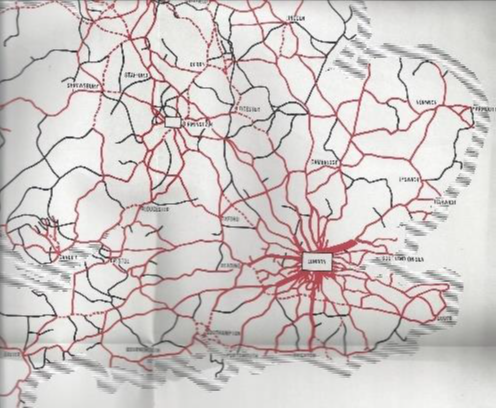
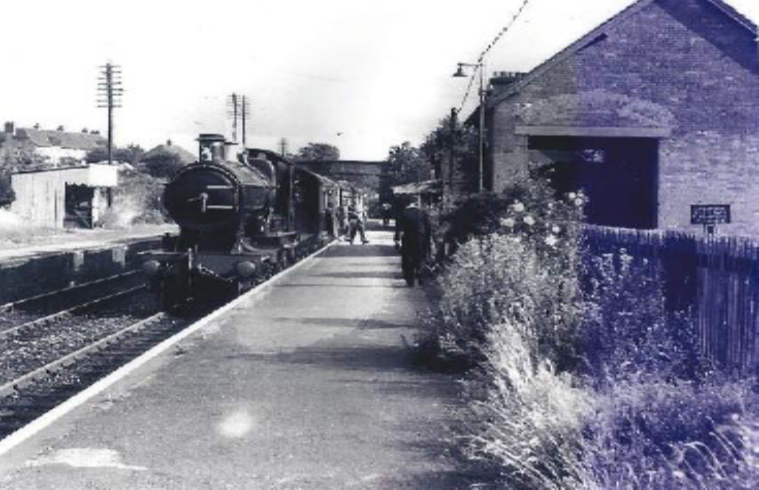
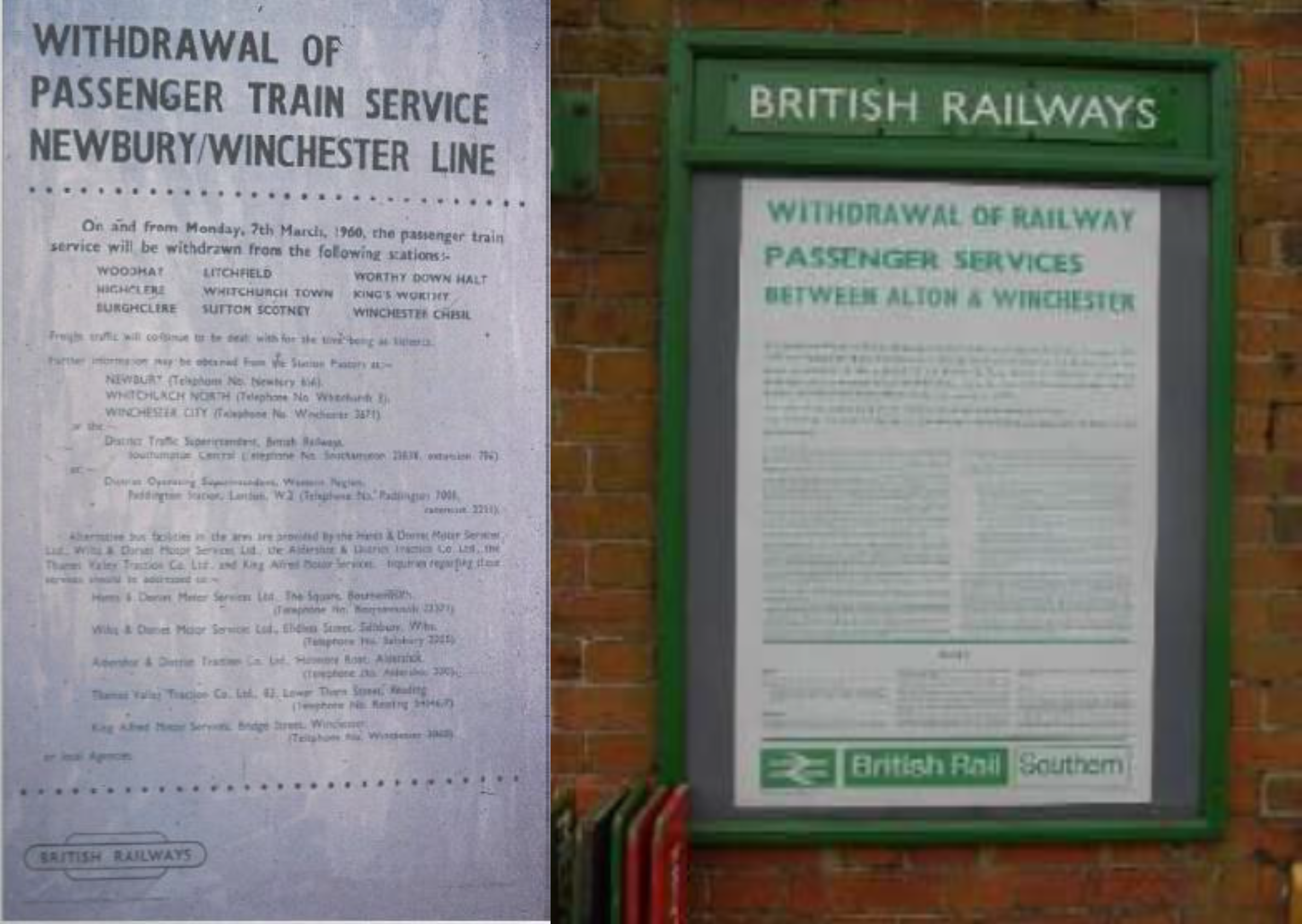
How were the railways actually built?
The Navvies
(Information and photo from The Watercress line www.watercressline.co.uk)
Engineers designed the railways, but it was the gangs of navvies who built the amazing cuttings, embankments, bridges, tunnels and sidings that changed the landscape in the early 19th C. The name ‘navvy’ is from the ‘navigators’ who built the first ‘navigation canals in Europe. By 1860, 250,000 workers had laid 3,000 miles of railway line across GB. No JCBs here, they were equipped with just gunpowder, picks, shovels and wheelbarrows. The building of the Alton, Alresford and Winchester Railway employed 400 Navvies with 150 horses and carts. A cut and fill technique was used: waste from cuttings used to build up embankments.
The navvies had distinct roles and were far removed from simple labourers. Starting at 7- 9 years old, boys were used for basic work :fats or fat-boys greasing axles and wheel hubs, spraggers, poking wood between wagon wheels to act as brakes, and older ones became tippers of the wagons etc. At 18 as an adult navvies became tigers (tunnelers), pickmen, muckshifters, timberman and so on. The ganger blew a whistle and shouted 'Blow-up, blow-up' to start work and 'Yo-ho, yo-ho' to end the day.
They were well paid, but their work was hard and often dangerous. Their reputation for fighting, living roughly and drinking too much was probably exaggerated by ‘Respectable’ Victorians. They lived in wooden huts called shanties, next to the railway, often with their families. The shanties were next to the railway, and as a section of line was finished they would be moved further down the line. Some fascinating facts here on Navvies
Compiled and written in fondest memories of Peter Clarke, who died in 2020
PLC/24.4.17 and K Adams 15.10.20



